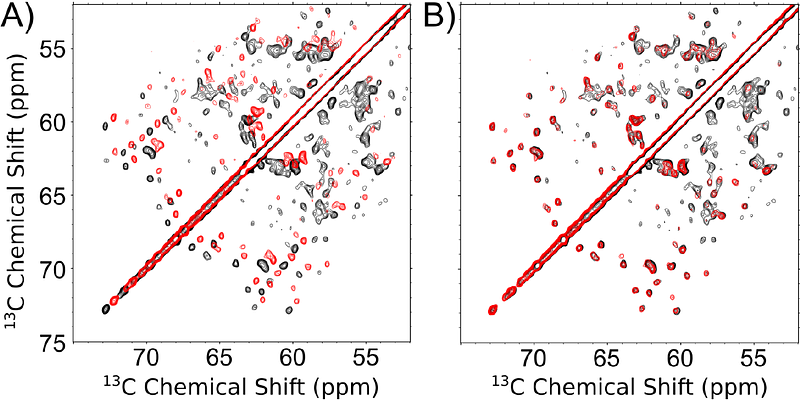NMR Spectral Alignment Utilizing a CryoEM Motion Correction Algorithm

NMR Spectral Alignment Utilizing a CryoEM Motion Correction Algorithm
Hemme, C.; Warmuth, O.; Wang, S.; Williams, C.; Thome, A.; Mueller, L. J.; Rienstra, C. M.; Grant, T.
AbstractWith recent advances in magic-angle spinning (MAS) solid-state NMR (SSNMR) resolution, precise spectral alignment has become a critical bottleneck in data processing workflows. While solution NMR employs deuterium lock sys-tems, most SSNMR probes still lack this capability; though a lock corrects for magnet drift and instabilities, it is not alone sufficient to account for field gradients, sample temperature differences, and pulse sequence effects that can contribute to ref-erencing errors among several data sets. These offsets become particularly problematic in the lengthy multidimensional ex-periments that provide the foundation for resonance assignment and structure determination procedures. Currently, researchers rely on manual alignment through visual peak inspection--a qualitative approach that often overemphasizes prominent, out-lying peaks while overlooking subtle, global patterns. This subjective process becomes increasingly impractical for use cases with lower sensitivity, such as large proteins with thousands of peaks. To address these challenges, here we present Auto-mated NMR Spectral Alignment (ANSA), a program that adapts cryo-electron microscopy motion correction principles to NMR spectroscopy. ANSA treats NMR spectra as images and applies cross-correlation functions to determine optimal align-ment, improving cross-correlation scores from 0.33 to 1.00 in controlled tests and achieving 0.96 correlation in real-world applications with previously misaligned spectra. The algorithm successfully aligns spectra across varying experimental con-ditions, corrects shifts in long-duration experiments, and works with 2D and 3D datasets, with approaches that can be readily extended to additional dimensions. By eliminating human bias and providing objective, consistent spectral alignment, ANSA enhances scientific rigor, improves reproducibility between experiments, and enables automation of critical data pro-cessing steps. The software is freely available as an open-source tool, ready for integration into existing NMR workflows.